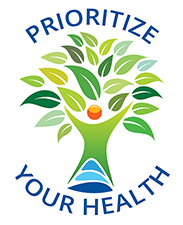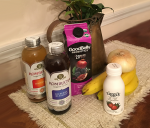Today, we are learning more and more about the benefits of Vitamin D. Vitamin D “has been linked to bone health, muscle function, brain health, pregnancy, immune activity, cardiovascular health, and cancer.”
Vitamin D is synthesized in the body from cholesterol following skin exposure to the sun’s UBV rays. It, technically, is not a true vitamin (a vital nutrient obtained from the diet), but acts more like a hormone. Vitamin D is involved in “the regulation of almost 2000 genes in the body.”

Your Skin & Vitamin D
Several factors influence our skin’s ability to synthesize Vitamin D:
- Using even weak sunscreens (SPF 8) can block 95% of your body’s ability to make Vitamin D.
- The amount of clothing we wear affects the body’s ability to make Vitamin D. Twenty minutes of sun exposure in a bathing suit can produce 10,000-20,000 IU (International Units) of Vitamin D.
- Where we live on the planet and the time of year greatly affects the quality of our sun exposure. In the Northern latitudes during winter months, sun exposure “doesn’t lead to any production of Vitamin D.” During summer months, “the body’s ability to make Vitamin D in the early morning and late afternoon, is minimal.”
- Very dark skin pigmentation “is estimated to have a natural SPF of 15, effectively reducing 99% of the skin’s ability to make Vitamin D.” Vitamin D deficiency is highest in the African-American population, followed by the Hispanic population.
- Aging also reduces the production of 7-dehydrocholesterol in the skin, a compound needed to convert sunlight to pre-vitamin D3. This can reduce the elderly’s ability to make Vitamin D by 75%.
- Kidney disease or liver damage “can impair the body’s ability to convert Vitamin D to its biologically active form.”
Sources of Vitamin D
There are two sources of Vitamin D: Vitamin D3 and Vitamin D2.
- Vitamin D3, also known as cholecalciferol, is an animal-based source. It can be found in fatty fish (100-300 IU depending on the type of fish), egg yolks (20 IU / yolk), and cod liver oil (400-1000 IU/ teaspoon).
- Vitamin D2, also known as ergocalciferol, is a plant-based source. Fresh shitake mushrooms contain about 100 IU/3.5 oz. Some foods, such as milk and cereals may be fortified with 100 IU of Vitamin D.
Vitamin D supplements are also available in varying strengths.
“Strong evidence indicates that Vitamin D3 is more effective at sustaining Vitamin D blood levels over time than Vitamin D2.” For vegans, there are plant-based forms of D3 made from lichen, fungi, and algae.
Recommended Daily Amounts
The recommended daily amounts of Vitamin D used to be measured in IU (International Units), but that has changed to mcg (micrograms) as of January, 2020. For children over 9 years of age and adults, the FDA recommends 600 IU (15 mcg), while the Endocrine Society is recommending 600 to 1000 IU (15 to 25 mcg ) and 1800 to 2000 IU (45 to 50 mcg) for adults over 70 years of age.
Given the many variables among one’s lifestyle, stage of life, food choices, medical conditions, and body weight, “a Vitamin D blood level is the most significant factor in determining if someone is getting enough Vitamin D.”
Circulating Vitamin D [25(OH)D] levels should preferably be between 30 to 60 ng/ml, although some sources recommend even higher levels between 60-80 ng/ml.
As noted by Grassroots Health scientists (a panel of 48 senior vitamin D researchers interested in Vitamin D research and education), for optimal results, frequent (ideally, daily) dosing is preferable to monthly mega-dosing. A Vitamin D deficiency may take several months to reverse and cannot be achieved by diet and sun exposure alone.
References:
- Integrative Nutrition. “Fifteen Facts About Vitamin D and Sunlight.” Institute of Integrative Nutrition. 2010
- John, D. PhD. “Dosage and Health Benefits of Vitamin D.” July 28, 2019. https://nordicnaturals.com (accessed 12/2019)
- Mercola, J. MD. Z” Does Vitamin D Supplementation Prevent Cancer and Heart Disease?” https://articles.mercola.com/sites/articles/archive (accessed 12/17/2019)
- Recommendations of the Institute of Medicine and the Endocrine Society Practice Guidelines: Daily Vitamin D Supplementation to Prevent Vitamin D Deficiency. 2011. The Endocrine Society. https://www.ncbi.nim.nih.gov/pmc/articles (accessed 12/9/2019)
- Wacker, M. MD and Holick, M. MD. “Vitamin D – Effects on Skeletal and Extraskeletal Health and the Need for Supplementation.” Nutrients. Published online 2013 Jan 10. https://www.ncbi.nlm.hih.gov (accessed 12/9/2019)









